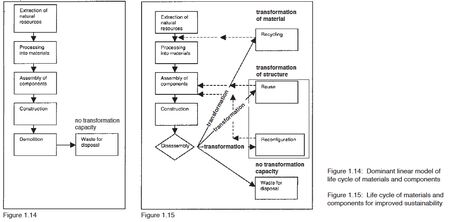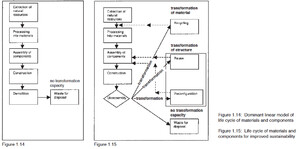FROM LINEAR TO CYCLIC LIFE CYCLE MODEL

Here is an example of a linear and circle model in the building industry.
Material flows in the building industry has a dominant linear direction in which material systems are running down, just like our linear water process in Texel. Such material flow is often defined as a once-through linear system passing from raw materials extraction, through materials processing, assembly, use, and finally to demolition. Such systems recognize one end-of-life scenario, waste disposal, which is the result of demolition.
If we look at biological ecosystems, that become ultimately sustainable, it is recognized that they have evolved over a long period into completely cyclic systems. In these systems resource and waste is undefined, since waste to one component of the system represents resources to another. The ideal use of materials and resources available for processes in building industry would be one that is similar to the above-mentioned cyclic bio-system. In order to change conventional linear material flow within the building industry, it is necessary to provide more environmental end-of-life cycle scenarios for building materials in place of landfill and incineration. A number of examples from other industries indicate that if the act of demolition is replaced with disassembly, conventional material flow can be diverted towards reuse, reconfiguration, and recycling of materials and components.

Durmisevic, E. (2006) Transformable Building Structures, Netherlands: TU Delft


 Elia Galiouna
Elia Galiouna